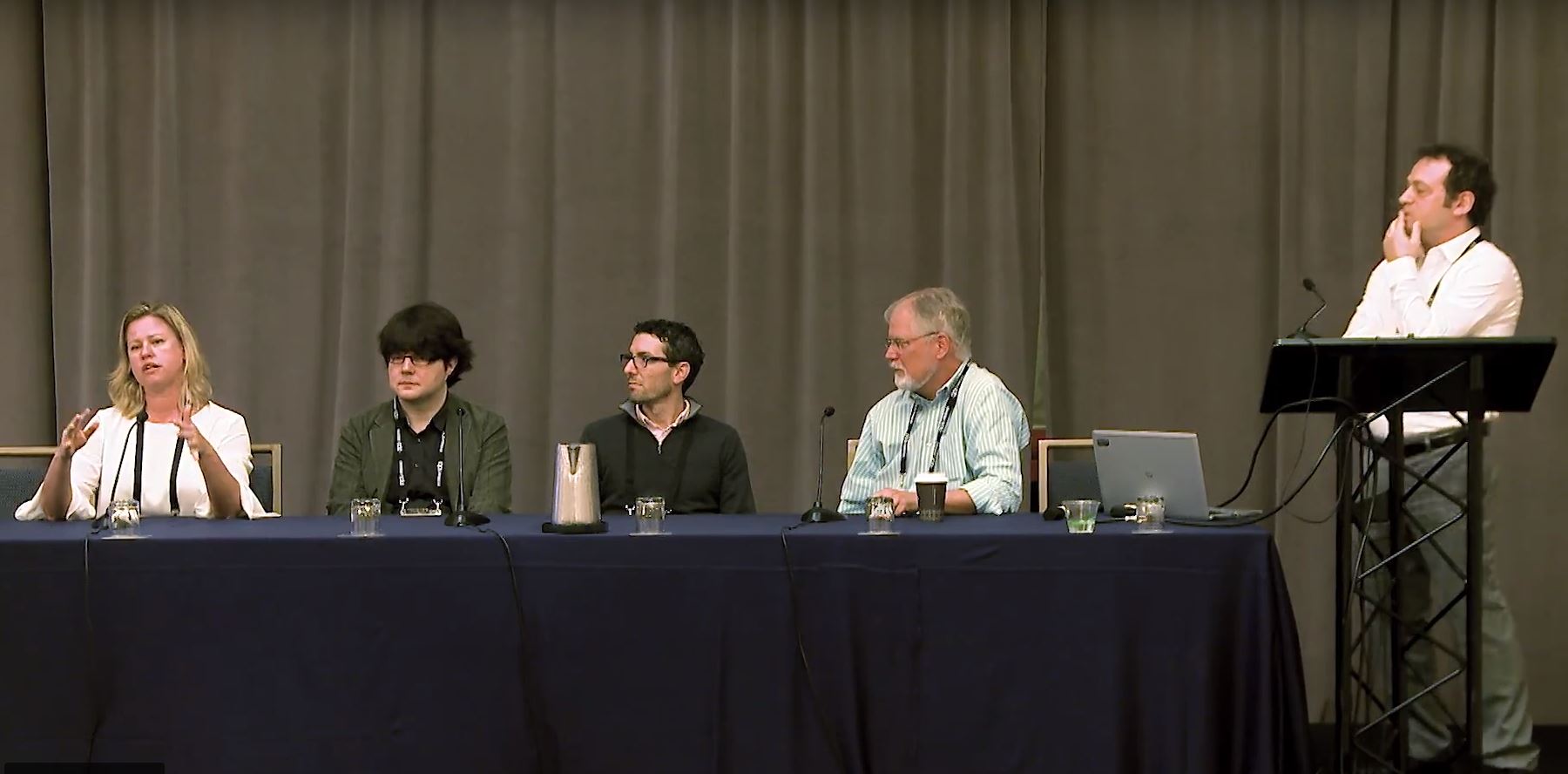APS Panel: Connecting Behavioral Scientists and Tech
The beneficial symbiosis between behavioral scientists and digital technologists came a cropper earlier this year when the Cambridge Analytica scandal highlighted the fraught relationship that can arise when ethical concerns are overlooked or ignored.
And yet the explosion of data comping from corporate sources (35 zettabytes are expected by 2010) and the burgeoning numbers of computationally adept social scientists eager to analyze mounds of data suggest any speed bumps in the path of the relationship will be easily overcome.
But what exactly does the tech industry want from social and behavioral scientists? That was the focus of a SAGE Publishing-sponsored panel, held in collaboration with the Center for Open Science, at the annual meeting of the Association for Psychological Science In San Francisco this summer. Four representatives from tech, ranging from big players like Google to startups like Jaunt, told an audience of psychologists about their experiences bouncing between the quad and the cube, and how the relationship between the two can best evolve.
The panel’s moderator illustrated the fading line dividing the two communities: Leib Litman is an assistant professor of psychology at Lander College and chief scientific officer for TurkPrime. He opened the 90-minute discussion, viewable in the video below, with an example from TurkPrime, a company that finds anonymous research subjects online.
Examining data from online platforms, including TurkPrime, Litman said they noticed that men got paid more than women. Given that TurkPrime, for one, in a “completely anonymous environment,” this just shouldn’t happen. While Leibman didn’t reveal any subsequent findings, he noted that the company’s reaction was to call in a gender scientist to figure out what was going on. “This is an example,” he explained, “of how a data set that’s part of the corporate sector can provide an important contribution to our understanding of the mechanisms of something that’s really of interest to academia and has important applications for theory and for society at large.”
In fact, he added, “Some data that are of interest to science are only available in the corporate sector.”
Alexis A. Fink, currently a senior leader within talent management at Intel, offered a taxonomy of collaboration, starting with the simple cases where either an academic brings in a capability the company doesn’t have in house or when capacity constraints stymie the company from developing or hiring their own full-time expertise. A very specific instance of that occurred at Netflix, offered Zach Schendel, the director of user experience research there. Netflix wanted to understand when people had an emotional reaction to the Netflix brand, and so without in-house assets to dedicate to the task, he added, they farmed the question out to academic researchers.
The next level, what Fink called “separation and selection,” was more complex. These are instances where academics are engaged because ultimately the company doesn’t want the data, whether for legal and ethical reasons, or out of fear of someday being deposed.
Andrew Walkingshaw, principal data scientist at Jaunt, added a category to this taxonomy based his own experiences of developing predictive applications but where the data need to remain private to preserve a competitive advantage. As a result, he looks for public data sets that allow him to benchmark a methodology’s performance without giving competitors an assist. He noted that development of such measures is usually conducted by academe, albeit with corporate funding in many cases, specifically for that reason.
A different approach came from Google, where research scientist Daniel Russell said there is much less of a divide between academe and industry. “It’s not uncommon,” he said, “for a new hire to come in and say, ‘This is more like grad school than grad school.’”



























































































